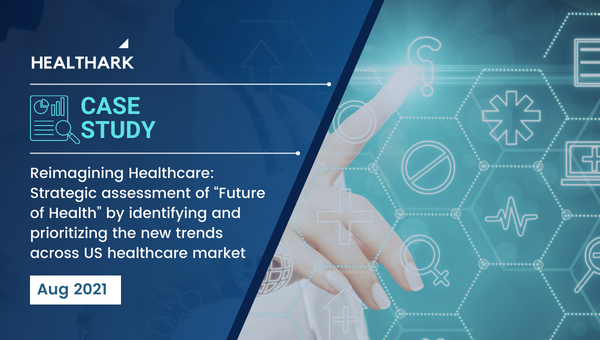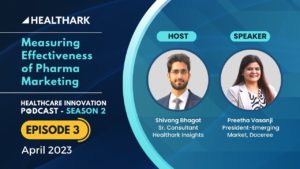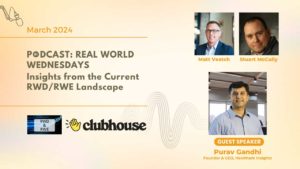Reimagining Healthcare: Strategic assessment of “Future of Health” by identifying and prioritizing the new trends across US healthcare market
Background and scope
Our client is one of the MNC based out of the UK with offices across 150 countries and territories worldwide. The client offers consulting services in diverse areas including Strategy, analytics and M&A, customer and marketing, core business operations, human capital, and enterprise technology and performance.
The client engaged Healthark Insights to capture and curate new trends under the future of healthcare that is upskilling and retraining, as well as reshaping how healthcare services are provided through their sensing platform
Client Situation:
The client was looking for trends around “the Future of Health” from multiple sources to enhance research, their analytic tools, and to generate the insights needed for further decision-making
Focusing on the emerging trends, the client wanted to analyze them using a large set of parameters and create personalized implications based on it
The client was looking for examples driven insights and findings
Using the data analyzed, the client wanted to further develop new revenue streams based on consumer insights, use cases, population health initiatives, and offerings
Our approach
Healthark worked with the client to help them identify breakthrough trends developed by entities including traditional players, orthogonal players and emerging players that can uplift the future of the health market in next 5-10 years using their in-built sensing platform
We identified the 6 possible trends that have / are likely to emerge and will replace and redefine today’s traditional life sciences and health care roles to power the future of health
Under each trend, key tenets were structured by doing secondary assessment and around those tenets, recent trends were captured
Each trend was later evaluated on the basis of few identified parameters and prioritized to understand the potential of each trend in the next 10-15 years
Identified the trends of future focus
Healthark collected the list of the emerging trends through comprehensive secondary research using a variety of sources: These trends were finalized by comparing with the recent use case of such trends in healthcare. These trends included – Interoperable data, Behavioral Healthcare, Scientific Breakthrough, Access to Care, Empowered Consumer and Data Sharing that can empower consumers in ways that are different to visualize now
Captured the tenets under each trend to evaluate
We divided the 6 trends into sub-tenets and then explored multiple themes to ensure a comprehensive view of the future of the health landscape. We were able to capture 500+ trends across broad areas as a part of the future of health. These trends were captured using various multiple sources and our internal database. The sub-tenets which were developed/started by the listed entities under traditional players, orthogonal players and emerging players were aligned with the main 6 trends later.
The sub-tenets which were classified under each trend were finalized based on the current demand and future change. Under the Interoperable data, tenets identified are Cross enterprise agreements, large data collection and management, real-time advanced analytics, data interoperability regulations and Investments in infrastructure and analytics. Data sharing trend includes technology advancement and consumer willingness, data privacy and transparency, Innovative business model, financial incentives to share data, data sourcing and 5g integration. Equitable access to care trends includes non-traditional care, reduction in the cost of care, decentralized medical tools, infrastructure to increase the coverage, social determinants of health and edge computing. An empowered consumer includes personalized healthcare, digital facilitators of care, outcomes of pandemic, disruptive offerings and health & wellness solutions. The behavioural change includes human digital interaction, innovative solutions, social proof heuristics, automation tactics and consumer feedback. Scientific breakthrough includes personalized therapies, clinical trials, real-world evidence and advances in gene sequencing.
We also used a set of keywords (also called ontology elements) while capturing these trends. These keywords have to be correlated to each example and trend. The ontology elements (keywords) were under the bucket of technology advancements, facilitators, business drivers, entities. These keywords under each bucket were added as per the summary of trends.
These examples which were fit in the category of each sub-tenet were then evaluated using different parameters
Captured examples were prioritized to identify the high potential area of trends
Healthark prioritized the examples based on high, medium and low. High priority was given to examples that used new emerging tools / disruptive offerings, such as genetic testing for health risks, as well as identify incentives that will steer employees toward prevention and well-being. the interoperability of a multitude of devices and systems—enabling the exchange of data among clinicians, specialists, and patients—that give doctors and other care providers access to a patient’s complete health information. Digital technologies that are targeted at making services less expensive but more convenient in the long term were given the status of “High”.
Examples that used the existing traditional technologies including telehealth, mobile app, home health, connected devices and are capable to partly drive the market in the future has been prioritized under the “medium” category.
At last, the technologies leveraged to fulfil the current goal of the health system and might not add significant value in the future was given the “low” priority. For e.g. It includes health technology that is used to identify the early risk of covid-19 has been given low priority.
Detailed implications were given for each identified trend to help the client focus on only the high priority trends. By implications, we mean actions that health organizations and companies are aimed at to improve the health of an individual. These range from different partnerships, initiatives, and digital offerings. We have also examined the potential to reduce the disease burden from innovations over the same period.
We helped clients to bring and highlight only those trends, which will be under high prioritizing to guide and align healthcare and technological developments together.
Project output
Based on our prioritization and implication, we measured the potential of identified trends to reduce the burden of disease globally through the application of proven interventions across the human lifespan over the next one or two decades. Out of the major SIX trends, TWO trends were advised to the client that suggested a game-changer in the future of health. These two trends were Interoperable data and Data Sharing that has the maximum high rating, if focused can be used as a blueprint for change.
Recommendations for the potential two trends were designed and strategic implications were also given for every two trends to help shape thinking about these two next-generation technologies of caring systems, extrapolated over the next 10-15 years in the future.




